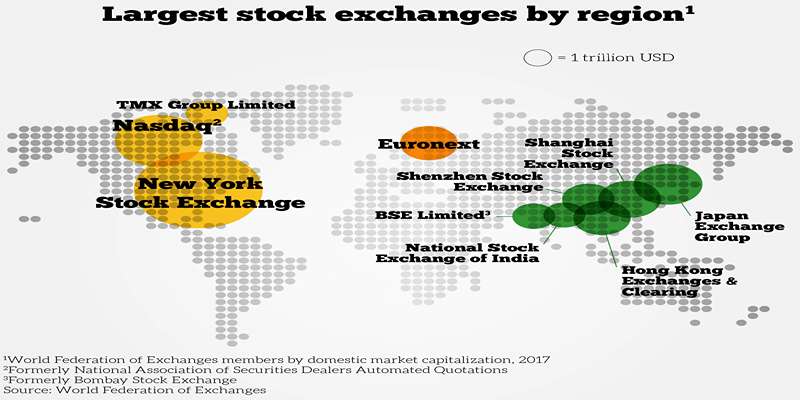Understanding Mutual Funds and IPOs Investments
Oct 23, 2024 By Kelly Walker
utual funds are investment vehicles that pool the capital from many investors to invest in a diversified portfolio of securities. They benefit individual investors with accessibility, expert management, and diversification. Mutual funds aim to generate returns while managing risk through broad market exposure.
Why are IPOs so risky? For beginners, IPO shares are typically not offered to regular customers at their lowest, most attractive pricing. By the time you can purchase shares in new companies, their prices may already have temporarily increased, and you may find it difficult to meet, let alone surpass, the inflated cost you invested in the long run.
The Investment Company Act of 1940 regulates mutual funds and also imposes some restrictions on their investment activities. Regarding IPOs, mutual funds are sometimes subject to a six-month restriction which prevents them from investing in newly issued stocks until they have traded for at least six months.
Lack of liquidity in the newly issued equities in IPOs can impact their costs and cause potential market distortions. This illiquidity poses risks for mutual funds considering IPO investments because it may make it more difficult for the fund to buy or sell shares at reasonable prices. Mutual funds must have adequate market liquidity to meet investor redemption requests and ensure efficient portfolio management.
Mutual funds frequently adopt a conservative investment, focusing on well-established companies with proven earnings and sales track records. When considering investing in IPOs, this strategy presents challenges because these companies are typically unidentified and lack a considerable operating history. As a result, many IPOs fail to meet the requirements specified by conservative mutual funds, making them ineligible to invest in IPOs.
Some mutual funds are more eager to invest in IPOs, especially those with active growth profiles. These funds actively seek investment opportunities in fast-growing companies, particularly recent IPOs. In recent years, mutual funds have increased their IPO investments, particularly in high-profile companies such as Palantir and Uber.
Specialized mutual funds are designed specifically for IPO investments to meet investor demand for IPO exposure. These funds may potentially invest in private sectors, giving small-scale investors quick access to popular IPOs.
Mutual Funds Focused on IPOs

The Renaissance Global IPO Fund was the only mutual fund that invested exclusively in initial public offerings (IPOs) in 2015. When the fund first started, it made investments in prospective IPOs all around the world. Given the high valuations and uncertain futures of these companies, it was significantly riskier than the broader market. The Renaissance Global IPO Fund was terminated in 2018 as ETFs gained popularity in place of IPO funds.
Understanding ETFs and IPOs Investments
Like mutual funds, ETFs provide investors access to diverse securities portfolios. The role of ETFs in IPO investment varies depending on the regulations of the underlying index. Some ETFs adhere to specific index criteria that determine whether they can participate in IPOs, while others, particularly those aimed at growth investors, are more likely to do so. For example, to be included in the S&P 1500 index, shares had to have traded for at least a year on a major stock exchange.
The S&P Total Market Index added qualifying IPOs during every quarterly stock index rebalancing. The S&P Total Market Index included a fast-track process for including significant IPOs within five working days.
Some ETFs that are concentrated on dividend aristocrats, actively stay clear of IPOs. Other ETFs may have regulations that allow them to participate in IPOs very fast, especially those geared toward growth investors.
ETFs' stated objectives are typically a strong indicator of whether they can invest in initial public offerings. It is ideal to delve into the index's rules to know exactly how the ETF handles IPOs.
ETFs focused on IPOs

There are ETFs specifically focused on IPOs, giving investors targeted exposure to this asset class.
The Renaissance IPO ETF and the First Trust U.S. Equity Opportunities ETF, or FPX were available to investors interested in IPOs even after the downfall of IPOs mutual funds. These big indices, including U.S. IPOs, were passively tracked.
The First Trust U.S. Equity Opportunities ETF (FPX) tracks major U.S. IPO indexes, allowing investors to participate in the performance of newly listed firms. The Renaissance IPO ETF (IPO) holds IPO stocks for a specific period after they start trading.
The Renaissance Global IPO Fund had higher costs and was actively managed. The Renaissance IPO ETF held the best 80% of IPO stocks for two years after they went public.
Investors have access to several ETFs that are focused on worldwide IPOs. Like FPX, the First Trust International Equity Opportunities ETF (FPXI) also provided access to foreign initial public offerings (IPOs). The First Trust IPOX Europe Equity Opportunities ETF (FPXE) similarly offered a means of investing in European initial public offerings. The Renaissance International IPO ETF (IPOS) was another ETF that Renaissance provided.
Conclusion
Mutual funds and ETFs can invest in IPOs, but they are subject to regulations and face challenges, including portfolio diversification, risk, and liquidity. There are aggressive growth funds and specialized mutual funds that concentrate on IPO investments, whereas conservative mutual funds frequently implicitly disqualify many IPOs. ETFs offer new ways for IPO exposure. Investors should consider liquidity, risk tolerance, and diversification need when considering IPO investments through mutual funds or ETFs.

Get To Know What Is Credit Life Insurance

How a High P/B Ratio Correlates to High ROE

A Comprehensive Guide About Unrestricted Net Assets?

Essential Guide to Understanding Deposit Slips

Stock Exchanges Around the World

Trinity Debt Management Review

What Is a Joint and Survivor Annuity?

What Do You Need To Know About Cards?

Student Discounts: A Comprehensive Guide

